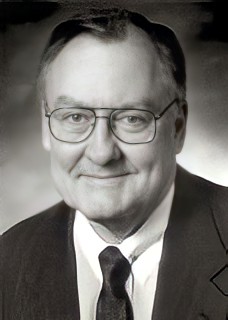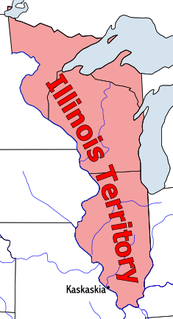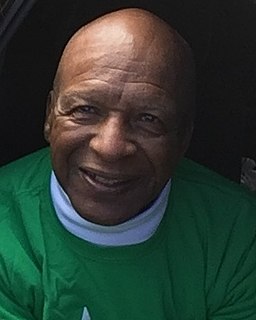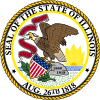It has been requested that the title of this article be changed to List of governors of Illinois . Please see the relevant discussion on the discussion page. The page should not be moved unless the discussion is closed; summarizing the consensus achieved in support of the move. |
| Governor of Illinois | |
|---|---|
 | |
 | |
| Residence | Illinois Executive Mansion |
| Term length | Four years, no term limits |
| Inaugural holder | Shadrach Bond |
| Formation | October 6, 1818 |
| Salary | $177,412 (2015) [1] ^α |
| Website | www2 |
The Governor of Illinois is the chief executive of the U.S. state of Illinois. The governor is the head of the executive branch of Illinois's state government and is charged with enforcing state laws. The governor has the power to either approve or veto bills passed by the Illinois Legislature, to convene the legislature, and to grant pardons, except in cases of impeachment. [2] The governor is also the commander-in-chief of the state's military forces.

The Governor of Illinois is the chief executive of the State of Illinois, and the various agencies and departments over which the officer has jurisdiction, as prescribed in the state constitution. It is a directly elected position, votes being cast by popular suffrage of residents of the state. The governor is responsible for enacting laws passed by the Illinois General Assembly. Illinois is one of 14 states that does not have a gubernatorial term-limit. The governor is commander-in-chief of the state's land, air and sea forces, when they are in state service.
Head of government is a generic term used for either the highest or second highest official in the executive branch of a sovereign state, a federated state, or a self-governing colony, who often presides over a cabinet, a group of ministers or secretaries who lead executive departments. The term "head of government" is often differentiated from the term "head of state", as they may be separate positions, individuals, or roles depending on the country.

In the United States, a state is a constituent political entity, of which there are currently 50. Bound together in a political union, each state holds governmental jurisdiction over a separate and defined geographic territory and shares its sovereignty with the federal government. Due to this shared sovereignty, Americans are citizens both of the federal republic and of the state in which they reside. State citizenship and residency are flexible, and no government approval is required to move between states, except for persons restricted by certain types of court orders. Four states use the term commonwealth rather than state in their full official names.
Contents
- Governors
- Governor of the Territory of Illinois
- Governors of the State of Illinois
- See also
- Notes
- References
Since becoming a state in 1818, 42 people have served as governor of Illinois; before statehood, it had only one territorial governor, Ninian Edwards. The longest-serving governor was James R. Thompson, who was elected four times to a term lasting 14 years, from 1977 to 1991. Only one governor, Richard J. Oglesby, has served multiple separate terms, having been elected in 1864, 1872, and 1884. One governor, Rod Blagojevich, was impeached and removed from office in 2009. The current governor is J. B. Pritzker, who took office on January 14, 2019.

Ninian Edwards was a founding political figure of the state of Illinois. He served as the only governor of the Illinois Territory from 1809 to 1818, as one of the first two United States Senators from Illinois from 1818 to 1824, and as the third Governor of Illinois from 1826 to 1830. In a time and place where personal coalitions were more influential than parties, Edwards led one of the two main factions in frontier Illinois politics.

James Robert Thompson Jr., also known as Big Jim Thompson, was the 37th and longest-serving governor of the US state of Illinois, serving from 1977 to 1991. A Republican, Thompson was elected to four consecutive terms and held the office for 14 years. Many years after leaving public office, he served as a member of the National Commission on Terrorist Attacks Upon the United States.

Richard James Oglesby was an American soldier and Republican politician from Illinois. He served in the United States Army during the Mexican–American War of 1846–47, and after the war became a prospector during the California Gold Rush and was elected to the Illinois General Assembly. During the American Civil War, Oglesby volunteered for the Union Army and rose to the rank of major general, serving in the Western Theater; he left the army when he was elected Governor of Illinois in 1864, and would serve three non-consecutive terms in that office. He also served as a United States Senator from Illinois from 1873 to 1879.





















































